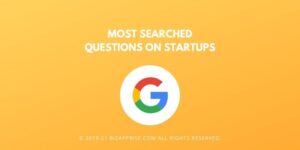© 2020-23 BizApprise. All rights reserved.
2 Best Tips on Web Accessibility: Site Structure and Navigation
Web Accessibility, i.e., being compliant with the usability requirement of physically and cognitively impaired users too, is becoming a mandatory need for all websites now. So, web developers need to have a clear understanding of the desirable practices in web accessibility and how to incorporate them into your websites to make the complaints.
In this article, we will discuss two important website elements to be considered in terms of web accessibility as the site structure and site navigation.
Major Web Accessibility Elements
1. Structure of websites
The creation of a unique website requires various levels of activities to ensure a proper relationship between various parts of the content. For someone who is accessing the webpage with a condition like impaired vision, it is essential to understand the page structure and content by scanning page title or heading. Keeping the needs of those who cannot follow the vision-specific clues, developers need to structure the pages to give proper information to the screen readers too.
This can be done by following the Web Accessibility guidelines for web page structuring. Some of the key considerations are as below:
- Titles to be made unique. Consider putting unique, logical tiles to every page. Two-page titles should be made similar, which may create confusion. The page title is presented first to the browser, which is read by the screen reader.
- Proper headings. For easy readability, siteimprove suggests that it is essential to put the headings also logically so that the sections which contain web content can be appropriately formatting using the header tags like H1, H2, etc., which makes it easier to distinguish them without relying on the text variations based on font type or size.
- Proper lists. The numbered or bulleted lists must be identified properly than using symbols and indents. Apart from helping the normal users to identify the info belong to specific lists, proper listing practices will also help to communicate properly about the entries in a list.
Related: 7 Best Tools for Entrepreneurs and Startups to Grow
2. Website Navigation
Navigation is a key aspect to take care of in terms of website accessibility. This applies to any website irrespective of its content and target group. Even for people without disability, website navigation needs to be proper in order to get the needed information. So, when it comes to the needs of the disabled, extra care should be given to it.
The two major elements as far as proper navigation are concerned are:
- For those who have disabilities, it is important to browse through the entire website by using the keyboard itself. They tend to use the tab key to move around different sections. So, to ensure accessibility, the websites should have a structure where all the elements are accessible by logically using the tab key. From menus to address bards, listings, links, content areas everything should be covered in an easy to follow the logic.
- Physical landmarks also needed to be defined properly to help the disabled people to navigate through the pages. The landmarks have to be specified with labels in the site code to give indications for proper navigation. These landmarks will help the screen readers to understand the navigation menu and properly read it for the users.
Those who already own a website also needed to do an audit of their website immediately to ensure accessibility features and need to work on those now if not compliant.







[…] Also Read: Ensure Web Accessibility Compliance in Site Structure and Navigation […]